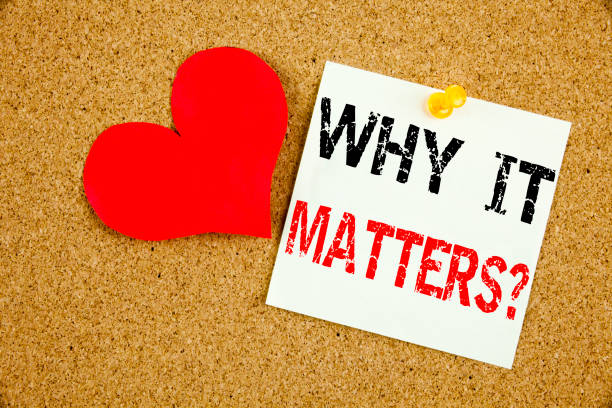In an era where boldness often masks insecurity and casualness can blur into disrespect, one thing remains constant:
Manners still work.
Not just as social decorum — but as linguistic signals of emotional intelligence , respect , and cultural awareness .
Welcome to the sociolinguistic lens on charm — where politeness isn’t outdated…
It’s the most powerful tool in modern flirtation and professional communication.
In this guide, we’ll explore:
- What sociolinguistics says about politeness and attraction
- How tone shapes perception — and connection
- Real-world examples from dating apps to business meetings
- And what psychology says about why some people respond better to calm than chaos
Let’s dive into how manners shape modern charm — and why saying “please” and “thank you” still lands better than most pickup lines.
The Sociolinguistic Roots of Attraction
Sociolinguistics is the study of how language functions within society — including how speech patterns, tone, and formality influence relationships.
And when it comes to flirting or professional engagement…
The way you say something often matters more than what you say.
Psychological Insight: Politeness Builds Emotional Safety
According to research published in Social Psychological and Personality Science , people are more likely to engage with someone who makes them feel respected — not impressed.
Polite speech acts like:
- “I appreciate your time.”
- “I hope that’s okay.”
- “Feel free to ignore me if you’d prefer.”
Signal emotional maturity , not weakness.
Because real charm doesn’t shout.
It invites.
And invitation builds trust — faster than aggression ever could.
5 Ways Manners Translate Into Modern Charm
Here’s how good manners function as silent seduction — and effective persuasion — across contexts.
1. Politeness Reduces Social Threat
A well-placed “I understand if this isn’t your thing” disarms tension — and makes people want to reply.
Because when someone feels safe — they’re more likely to open up.
Example:
“You should respond.”
“Hope everything’s good — take care either way.”
One pushes. The other pulls — gently.
And sometimes, pulling wins every time.
2. Tone Carries Cultural Respect
Manners aren’t universal — but they do signal awareness of cultural norms .
This means:
- Adjusting greetings based on context
- Matching energy without overstepping
- Using respectful humor
- Avoiding slang unless invited
Why does this matter?
Because in both digital flirting and global commerce, tone defines whether you’re charming… or confusing.
3. Silence Can Be Part of the Etiquette
Sometimes, the most polite move is to not message again too soon .
People appreciate space — especially after a thoughtful opener.
Example: “Now I’m going to stop before I say too much…”
Then wait for her to respond — or not.
Because real confidence doesn’t panic at silence.
It respects it.
4. Humility Beats Bragging — Especially Early On
Manners include knowing when to let others shine — not just yourself.
Instead of: “I’ve had a lot of interest — but I wanted to talk to you first.”
Try: “I hope this message doesn’t ruin our vibe — but I genuinely enjoyed our last chat.”
One sounds rehearsed. The other feels human.
And in the world of modern interaction — human beats hype every time .
5. Presence Over Performance Wins
Real charm isn’t about crafting the perfect opener — it’s about showing up clearly, confidently, and with warmth.
That means:
- Listening through text
- Reading between the lines
- Matching her energy — not forcing yours
- Letting sincerity speak louder than scripts
Because in the end, the best conversations don’t come from cleverness alone…
They come from presence .
And presence begins with manners .
Real-Life Examples: When Politeness Sparked Connection
Let’s look at real interactions where tone made all the difference.
The Match Who Said Less — and Got More
He sent:
“Your bio made me curious — wanted to say hi back.”
She replied instantly:
“Now I’m wondering what caught your attention…”
Why It Worked: He led with respect — not pressure.
His message felt warm, not performative — and she responded because of it.
The DM That Felt Like a Gentle Knock
She messaged him with:
“I enjoy how easy it is to talk to you — wanted to keep things warm between us.”
He replied:
“Now I’m smiling longer than intended…”
Why It Worked: She used language that built rapport — not expectation.
And that’s exactly what modern charm requires.
The Voice Note That Carried Grace
After weeks of texting, he finally sent a voice note — ending with:
“I think I’ll go ahead and blame fatigue for that one.”
She laughed — and responded with her own voice note:
“Now I’m even more curious about your tone.”
Why It Worked: He showed humility — and she appreciated the honesty.
Because real charm isn’t about being perfect — it’s about being present.
How to Use Manners Without Sounding Old-Fashioned
Want to be polite — without sounding out of touch?
Here’s how to use sociolinguistic etiquette to build real connection.
1. Lead With Curiosity, Not Agenda
Instead of pushing for a reaction, invite conversation.
Try These:
“What’s something most people miss about you?”
“Are you always this interesting — or did you practice?”
These lines show interest — not intention.
And sometimes, curiosity sparks chemistry better than flirtation ever could.
2. Use Humor That Disarms Tension
Playfulness reduces friction — and makes politeness feel less formal.
Good Examples:
“I promise to stop trying so hard to impress — after this message.”
“I wasn’t going to flirt today… but clearly, I failed.”
Avoid sarcasm that feels sharp — keep it light, not lazy.
Because real charm doesn’t need edge to land well.
3. Acknowledge Boundaries Before Testing Them
Some people need space to process. Others thrive on directness.
So instead of chasing, try pausing.
Try These:
“Now I’m going to give you space — but wanted to keep things warm.”
“I appreciate how easy it is to talk to you — no rush on replies.”
This shows control — and builds comfort.
4. Let AI Enhance — Not Replace — Your Voice
AI tools can help craft messages — but only if you adjust them to match your style.
Use AI suggestions as a starting point — then personalize them.
Because sociolinguistically, people respond to authenticity — not automation.
5. Don’t Confuse Politeness for Weakness
Manners aren’t submission — they’re confidence expressed through clarity .
If you lead with: “I admire how calm you carry yourself.”
Or: “Your presence feels rare — wanted to say hi again.”
You’re not playing small.
You’re speaking with strength — and subtlety.
And that’s what makes the line memorable.
Frequently Asked Questions (FAQ)
Q: Do women still find politeness attractive?
A: Yes — especially when paired with confidence and emotional awareness.
Q: Should I avoid humor if I want to sound respectful?
A: No — just make sure it matches her tone and timing.
Q: Is being overly formal bad for flirting?
A: Sometimes — but strategic formality builds intrigue, not distance.
Q: Can politeness work in cold outreach?
A: Absolutely — especially when paired with curiosity and warmth.
Q: Do men notice when women are polite too?
A: Definitely — many report feeling more comfortable when approached with clarity, not pressure.
Final Thoughts
Manners have never been about performance — they’re about presence .
And in a world full of aggressive openers, robotic messages, and fast-paced expectations…
Politeness stands out.
Because real charm doesn’t shout.
It smiles.
It pauses.
It listens — even through text.
So next time you’re messaging someone special — or building brand voice for your store…
Don’t reach for the boldest line.
Reach for the clearest one.
Because the most powerful words aren’t the loudest.
They’re the ones that make someone want to reply — not run away.
And sometimes, the most attractive thing you can say…
Is something kind — said with confidence.





